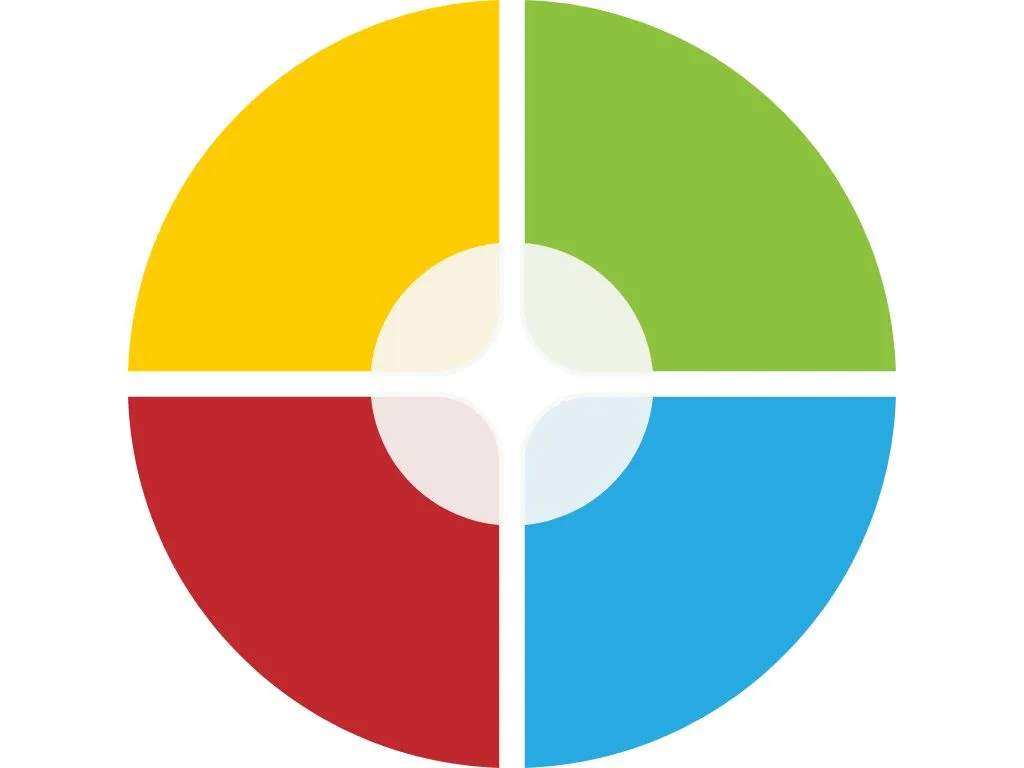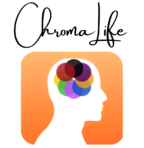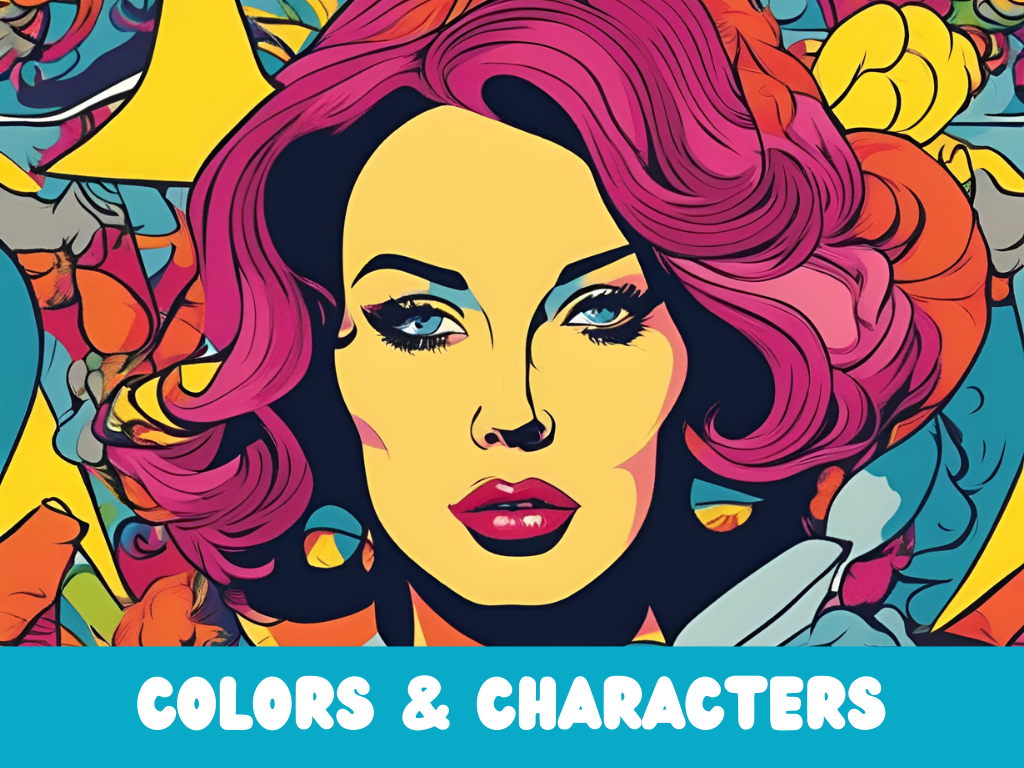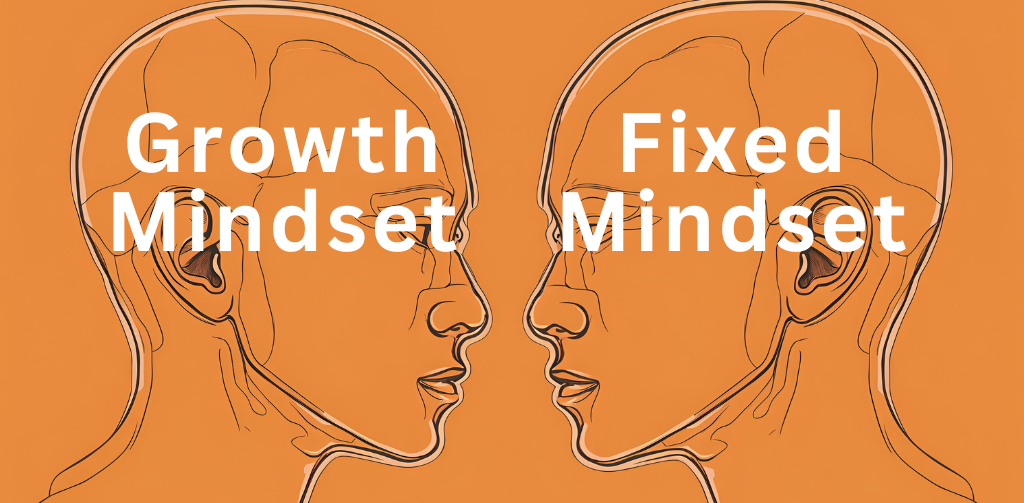[read-time]

The DISC personality test and The Personality Color Assessment are two popular tools that, despite their differing approaches, can be complementary when used together. This blog post explores how combining insights from both can provide a deeper understanding of your personality and that of others too.
What is The Personality Color Assessment?
Personality color assessments categorize individuals based on their favorite colors, which are thought to reflect their core personality traits. Typical associations might include:
Red: Energetic, assertive, and proactive.
Blue: Calm, analytical, and trustworthy.
Yellow: Optimistic, expressive, and creative.
Green: Peaceful, caring, and stable.
Our personality assessment goes step further by including the additional color of Orange traits.
Orange: Creative, spontaneous, and adaptable.
Understanding the DISC Personality Test
The DISC personality test classifies personalities into four primary behavior types, focusing on how individuals respond to challenges, influence others, respond to rules and procedures, and deal with changes in their environment:
D (Dominance): Direct, results-oriented, strong-willed.
I (Influence): Sociable, talkative, persuasive.
S (Steadiness): Gentle, accommodating, patient.
C (Conscientiousness): Analytical, reserved, precise.
Five Often Overlooked Integrations
Red Personality and DISC’s Dominance (D)
Red personalities in color assessment systems often align closely with the Dominance (D) dimension of the DISC model. Both share characteristics of assertiveness, directness, and a results-oriented approach.
Red personality traits typically score high on the D scale of DISC, exhibiting strong leadership qualities, decisiveness, and a competitive spirit. This correlation can be leveraged in various professional settings. For instance, in executive roles, red personalities can utilize their natural dominance to drive organizational goals, make quick decisions, and lead with confidence. In sales environments, their assertiveness can be channeled into closing deals and achieving targets.
However, it’s crucial to balance these traits with emotional intelligence. Leadership development programs for red personalities should focus on honing their decisive nature while also cultivating skills in active listening and collaboration to create a more inclusive leadership style.
Blue Personality and DISC’s Conscientiousness (C)
Blue personalities show strong connections to the Conscientiousness (C) factor in the DISC model. Both are characterized by analytical thinking, attention to detail, and a preference for structure and order. This alignment has significant implications in workplace settings.
Blue personalities often excel in roles requiring high levels of accuracy, systematic approaches, and adherence to standards – all key aspects of the C dimension in DISC. In practical applications, this understanding can guide job placement and team formation. For example, blue personalities might thrive in roles such as financial analysis, quality control, or research and development, where their meticulous nature aligns with job demands.
In project management, they can leverage their conscientiousness to ensure thorough planning and execution.
Furthermore, in personal development contexts, recognizing this connection can help blue personalities understand their strengths in creating systems and maintaining high standards, while also identifying areas for growth, such as adaptability and spontaneity, which might be less natural for them.
Green Personality and DISC’s Steadiness (S)
Green personalities, often associated with harmony, empathy, and supportiveness, show interesting correlations with the Steadiness (S) dimension of the DISC model. This alignment offers rich insights for personal and professional development. In practical applications, green personalities might excel in roles that require patience, consistency, and a supportive approach.
For instance, in human resources or customer service professions, their natural steadiness can foster a calm and reliable environment. The connection to the S dimension suggests that green personalities might also thrive in roles requiring team cooperation and long-term relationship building, such as account management or community outreach.
Team-building exercises can leverage this understanding by positioning green personalities as stabilizing forces within groups, especially in high-stress environments.
Leadership development programs for green personalities could focus on leveraging their natural ability to create harmonious work environments while also developing skills in decisive action and change management to become more well-rounded leaders.
Yellow Personality and DISC’s Influence (I)
Yellow personalities, characterized by their optimism, enthusiasm, and sociability, align closely with the Influence (I) dimension in the DISC model. This connection has significant implications for roles requiring interpersonal skills and persuasive abilities.
Yellow personalities can be strategically placed in positions that involve networking, public relations, or sales. For example, in marketing teams, yellow personalities can drive engagement by leveraging their natural charm and ability to generate excitement around ideas or products. Their high influence makes them valuable in team environments where motivation and positive energy are crucial.
In educational or training settings, understanding this connection can help in developing interactive and engaging learning experiences that cater to the yellow personality’s preference for social interaction and dynamic environments.
For personal development, yellow personalities can be guided to harness their influencing skills in leadership roles, while also developing skills in follow-through and attention to detail to complement their natural enthusiasm.
Orange Personality and DISC’s Combination of Dominance (D) and Influence (I)
Orange personalities, while not always included in every color personality system, often represent a blend of assertiveness, enthusiasm, and adventure-seeking.
This color type shows interesting correlations with a combination of the Dominance (D) and Influence (I) dimensions in the DISC model.
This dual alignment can be particularly powerful in roles requiring both leadership and persuasive skills. For instance, in entrepreneurial settings, orange personalities can leverage their dominance to drive initiatives forward and their influence to inspire and motivate teams.
In sales leadership roles, they might excel at both setting ambitious targets (D) and rallying teams to achieve them (I).
In the field of change management, orange personalities can be effective in both decisively implementing changes and persuasively communicating the benefits to stakeholders.
Leadership development for orange personalities could focus on balancing their natural drive and charisma with skills in strategic planning and empathetic listening.
The Takeaway
Combining the insights from personality color assessments with the DISC profiling system offers comprehensive tools for understanding human behavior.
Whether you’re looking to improve your personal relationships, increase workplace productivity, or simply gain deeper self-awareness, exploring both dimensions of your personality can be incredibly rewarding.
Ready to dive deeper into your personality? Consider taking our personality color assessment to discover how it will help you navigate both personal and professional challenges more effectively!
How to make new friends? Does Your Color Types Personality
[read-time] Knowing how to make new friends is a daunting task, especially as we get older and our social circles become…
The Personality Color Assessment & The OCEAN Model (Big 5
[read-time] This article delves into how our personality color assessment aligns with the OCEAN Model – The Big 5 Personality Traits…
The Myers Briggs Personality Test and The Color Personality Test
The Color Personality Test categorizes individuals based on their preferred colors, associating these colors with specific personality traits. Understanding the…
The Power of Combining Colors Personality Assessment with Carol Dweck’s
[read-time] Table of ContentsIntroduction to motivation and mindset theoryIntroduction to personality assessments and their role in understanding oneselfCarol Dweck’s theory of…
Personality Color Assessment – What Exactly is it and Why
In this article you’ll learn 5 vital benefits of personality color assessments!…





